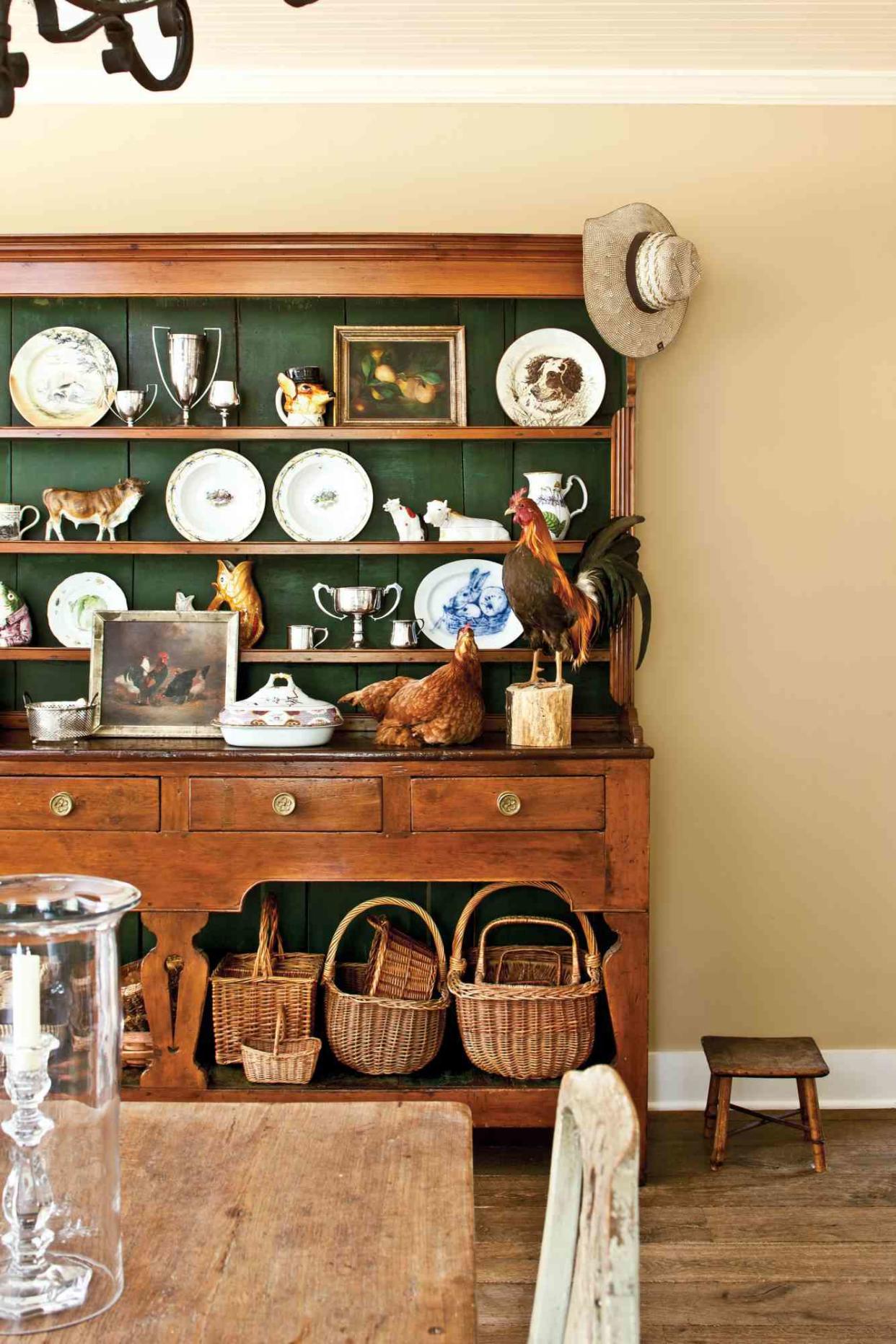8 Tips for Scoring the Best Secondhand Décor, According to a Serious Collector

Photo: Laurey W. Glenn
If you ask us, new isn't always better. Incorporating secondhand décor—pre-owned furniture, art, textiles, rugs, lighting, and other curios—into your home's design not only allows you to reduce waste but also immediately imbue it with the kind of personality and character you can't buy in a shiny, big-box showroom. Not to mention, your dollar stretches a whole lot further—scoring that just-right piece with perfect patina for a song can be downright addicting.
But veteran thrifters and secondhand shoppers will warn you, the practice can be as frustrating as it is fun. It's difficult not to become overwhelmed by the sheer volume of inventory available everywhere from eBay to local estate sales or discouraged when you can't find what you're looking for as quickly as you might hope. Successful secondhand shopping takes patience, hard work, creativity, and a little luck.
To arm you with the necessary tools to get started, we talked to Nashville entrepreneur Brittney Forrister. A regular thrifter and constant collector, Forrister worked for the online estate sale start-up, Everything But The House, before launching The Lot Showroom, a boutique textile firm, representing specialty brands such as Virginia Kraft Textiles. In late 2021, she opened a jewel-box-sized Nashville shop, which features many of her fabric lines but stands out for her collection of vintage finds. For Forrister's best treasure hunting tips, read on.
Think Outside the Box
You might really love a good old-fashioned estate sale. We do, too. But to scoop up the best finds, Forrister recommends utilizing a variety of thrifting resources. "Some people really like to stay in their lane," Forrister says. "But I'm always asking myself: 'Where else can I find something?' So, I source on eBay and Etsy, too. And online auction sites like Everything But The House and Live Auctioneers. Just make sure you're using an online source that is monitored."
When it comes to in-person antiques markets, she favors Scott Antique Markets in Atlanta and Brimfield Flea, located just outside Boston.
Hit the Road
For Forrister, every road trip is a thrifting opportunity. A North Carolina native, she loves hunting the mountains around her hometown for folk art. "I'll always stop for a good roadside antique sale or even a yard sale," she says.
And when she's hitting the estate sale circuit, she likes jumping in the car and getting out of big cities like Nashville to scope out nearby small towns instead. With fewer shoppers, these small, less-publicized sales can yield big rewards.
Keep a (Loose) List
Successful secondhand shopping requires some mental gymnastics, Forrister says. "I think you always need to have in the back of your mind what you want to be looking for or things you want to manifest, but that being said, to be really successful you can also never have your heart set on finding any one thing. You just have to be open to what speaks to you."
Be Your Own Curator
Trust your gut not the price tag, and you'll slowly build up an interesting mix of pieces that tells your story, adding layers of personality to your home. "Don't let price dictate what you think an item is worth," Forrister says. "Just because something is $125 doesn't mean that it's actually worth that in terms of market value. On the flip side, just because something marked $5 doesn't mean it has incredible value." Remember, the best thrifting is a personal pursuit.
Get Creative
On the secondhand market, form doesn't always have to follow function. A $2 plastic box of colorful thread doesn't have to end up in your sewing kit; with a little imagination, it's art, says Forrister, who took just one such find and created a geometric grid with the thread and had it framed like fine art. It hung on the wall of her shop until a customer scooped it up. Moral of the story: "Get creative about how things can be reused, repurposed, or revitalized," she says.
Know When to Negotiate…And Not
Sure, scoring a deal is part of the innate thrill of thrifting, but even here there are rules. "If you know in your heart you're getting a good deal, don't push it," she says.
However, buying a bunch of items is one instance where it's generally okay to negotiate. "As it relates to estate sales, the first day you're going to get first dibs, but you're going to pay for it," Forrister says. Sunday shoppers will have less to choose from, but remaining items are often marked down fifty and seventy percent off.
Stock Your Toolbox
"This might sound silly, but I keep a kit in my car," Forrister says. "It's always good to have a big L.L. Bean bag and a few empty boxes on hand. A lot of places don't provide that sort of thing."
Thrifting gold is often found in the unlikeliest of places, so it pays to be prepared. Her secondhand shopping kit also typically includes a pair of scissors, some twine, a few bungee cords, gloves, and a little bit of cash.
Never Stop Hunting
"I'm constantly looking," Forrister admits. "You have to really love [the hunt] because it isn't always rewarding. It's a lot of stop and go on the highway, walking in and not finding a thing." But it's that willingness to put in the work and stop at just one more sale or browse on more online auction that's the real secret to successful thrifting and what makes the reward that much sweeter.

